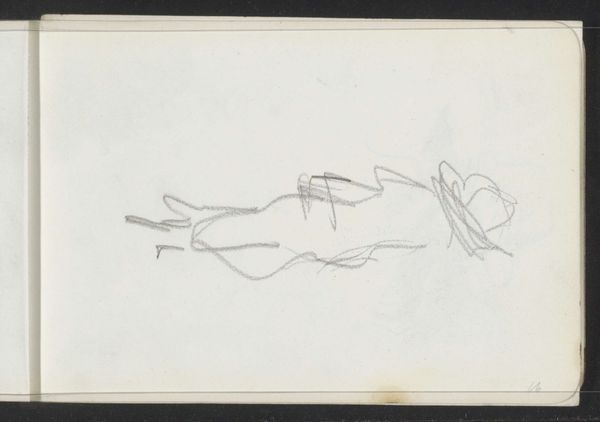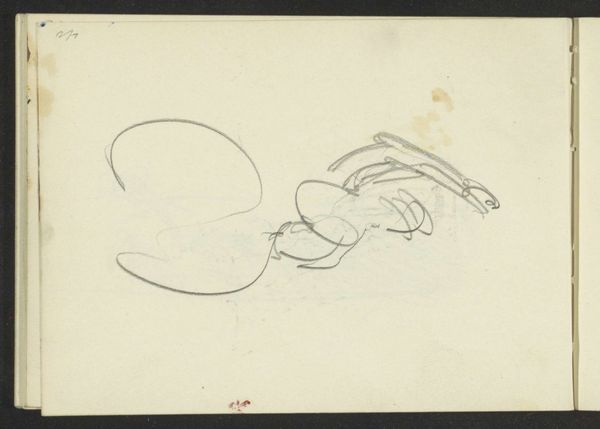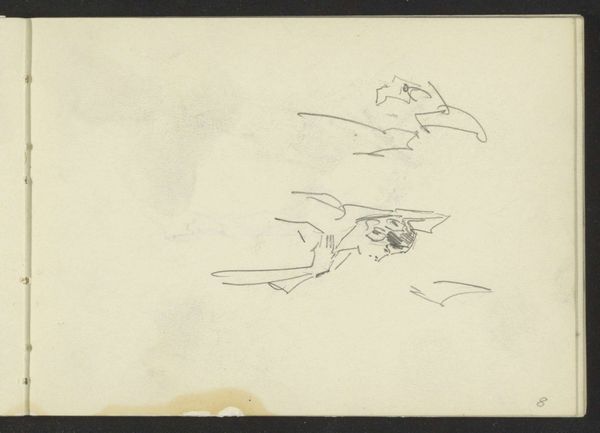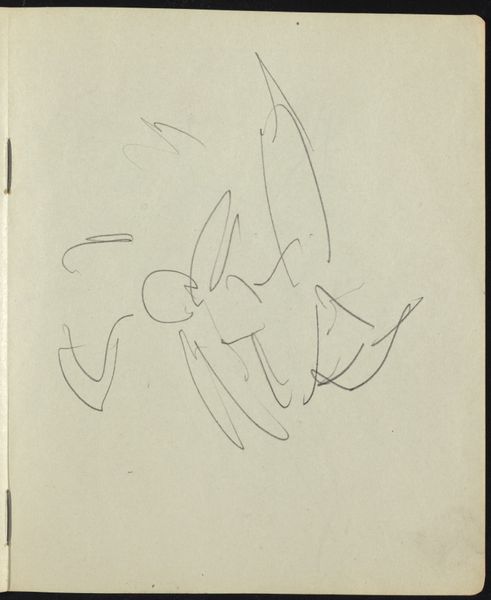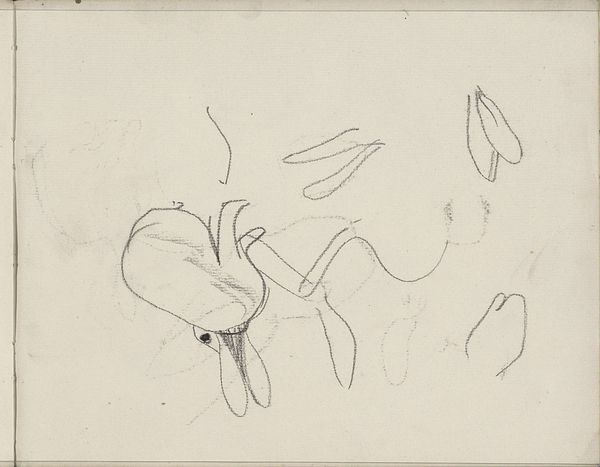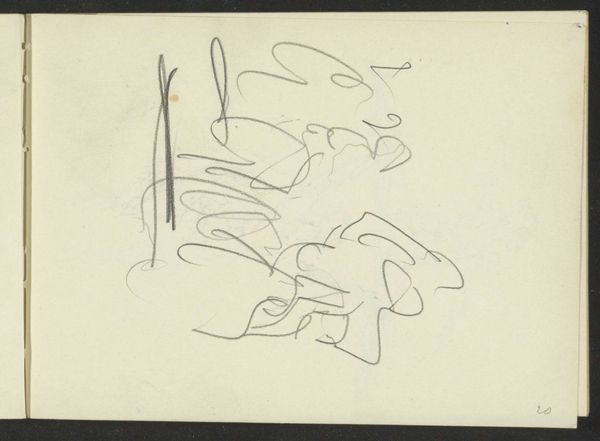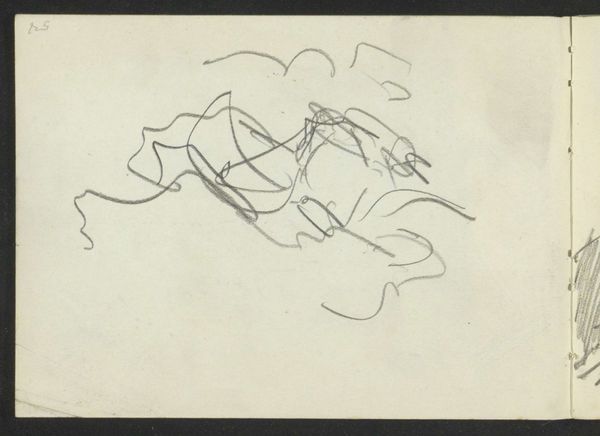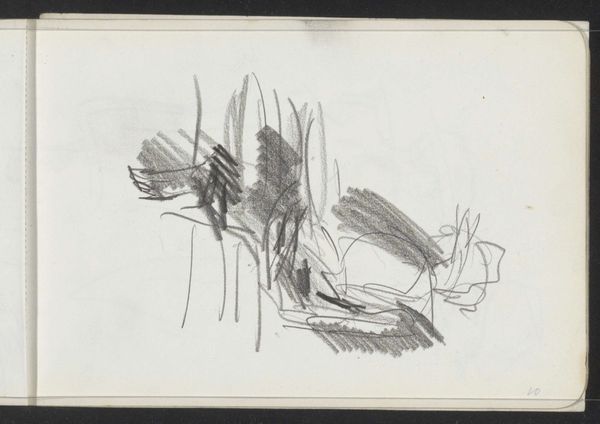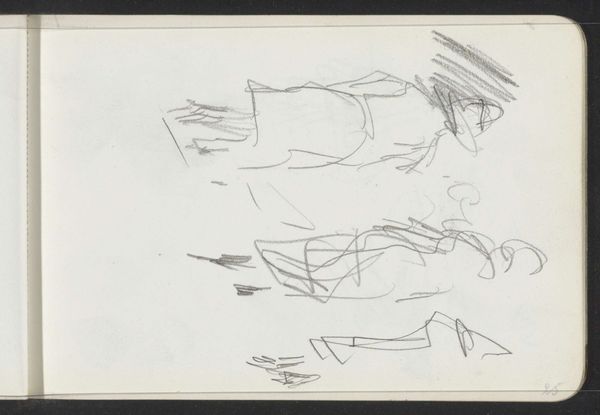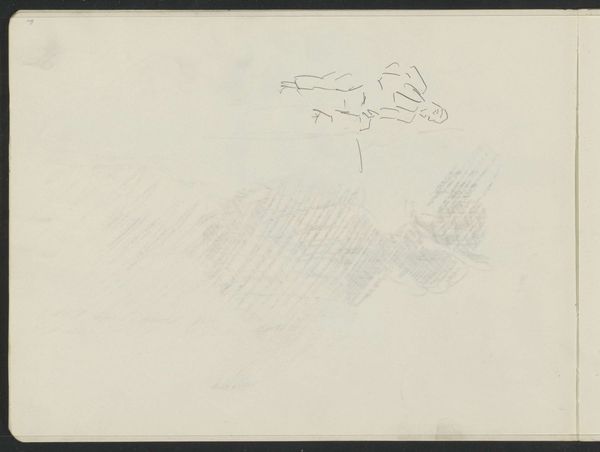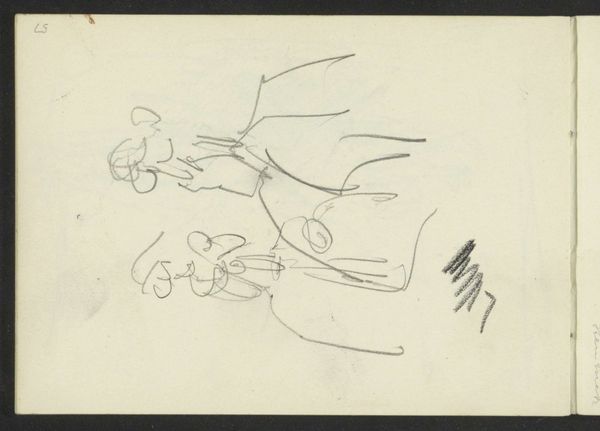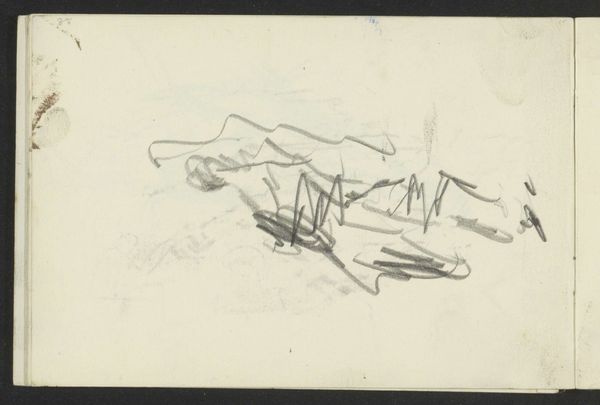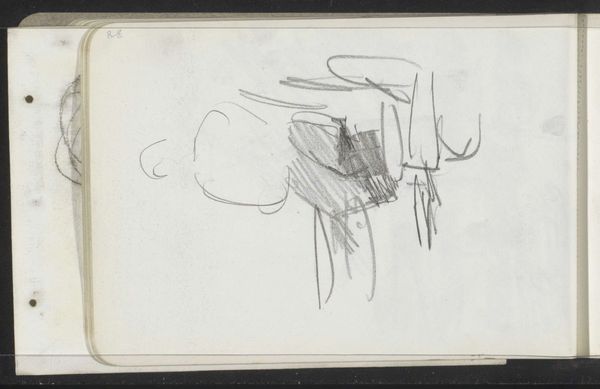
Copyright: Rijks Museum: Open Domain
Editor: Here we have "Vrouw met hoed, in profiel" – or "Woman with a hat, in profile" – by Isaac Israels, likely made between 1875 and 1934. It’s a pencil drawing, very minimal… Almost like a fleeting thought captured on paper. What stands out to you in this seemingly simple piece? Curator: Well, first off, let's think about the pencil itself. Graphite, mined, processed, formed. Who handled it before Israels? What was the journey of this implement, this *tool* for capturing an image? That alone places it within a system of labor and resource extraction. Editor: That’s an interesting angle. I hadn't considered the pencil's history. Curator: Exactly. Now, look at the paper. Notice the manufacturer's stamp in the corner? W.M. Stam. That locates the paper, its production, and its market in a specific place and time. This paper was a commodity. Consider its cost, its availability. Was it mass produced, or a luxury item? How did that affect who could create art? Editor: So, even a simple sketch on paper is embedded in a web of production and consumption? Curator: Precisely! The drawing is an end result, but the real story for me lies in deconstructing the means of its creation. Who benefitted from it? Who toiled? The simplicity is deceptive; the material reality complex. What assumptions do we bring when we automatically separate "drawing" from "production" of other less aesthetic products? Editor: It changes my perception of the piece, to see beyond the artistic expression to the entire industrial and social context that enabled its creation. Thank you. Curator: Indeed. Recognizing the network of labor and production inherent in every artwork challenges the romantic view of the solitary artist.
Comments
No comments
Be the first to comment and join the conversation on the ultimate creative platform.

